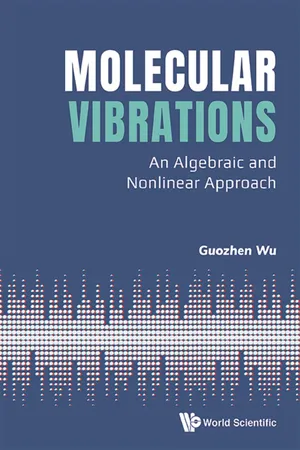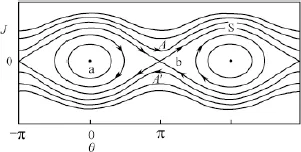
- 248 pages
- English
- ePUB (mobile friendly)
- Available on iOS & Android
About this book
-->
This book focuses on the main idea that highly-excited molecular vibration is a nonlinear, many-body and semiclassical system. Therefore, many ideas and techniques in nonlinear fields such as chaos, resonance, Lyapunov exponent, etc. can be incorporated into this study. Together with the Lie algebraic coset algorithm, readers are able to approach the topics in a simple arithmetic and realistic way in contrast to the traditional solving of Schrödinger equation.
Covering the author's research in over two decades, these works bridge the gaps between molecular vibration and nonlinear sciences, many new characters are introduced for molecular highly-excited vibration from a fresh viewpoint of nonlinearity, especially, the chaos. Related works of the elementary ideas in this field can be found in the first three chapters for the readers to be familiar with, while the rest of the chapters offer concrete examples with flourishing ideas and results on system dynamics which are not known or neglected by the traditional wave function algorithm.
--> Sample Chapter(s)
1. Pendulum Dynamics --> Contents:
- Preface
- Pendulum Dynamics
- Algebraic Approach to Vibrational Dynamics
- Chaos
- C–H Bending Motion of Acetylene
- Assignments and Classification of Vibrational Manifolds
- Dixon Dip
- Quantization by Lyapunov Exponent and Periodic Trajectories
- Dynamics of DCO/HCO and Dynamical Barrier Due to Extremely Irrational Couplings
- Dynamical Potential Analysis for HCP, DCP, N 2 O, HOCl and HOBr
- Chaos in the Transition State Induced by the Bending Motion
--> -->
Readership: Postgrads and researchers in nonlinear science and analysis.
-->Nonlinear Science;Molecular Vibration;Algebraic Method;Nonlinear Method;Chaos0 Key Features:
- It broadens the prospects of molecular vibration to high excitation
- It broadens the treatment of molecular vibration to algebraic and nonlinear methods
Frequently asked questions
- Essential is ideal for learners and professionals who enjoy exploring a wide range of subjects. Access the Essential Library with 800,000+ trusted titles and best-sellers across business, personal growth, and the humanities. Includes unlimited reading time and Standard Read Aloud voice.
- Complete: Perfect for advanced learners and researchers needing full, unrestricted access. Unlock 1.4M+ books across hundreds of subjects, including academic and specialized titles. The Complete Plan also includes advanced features like Premium Read Aloud and Research Assistant.
Please note we cannot support devices running on iOS 13 and Android 7 or earlier. Learn more about using the app.
Information
Chapter 1
Pendulum Dynamics
1.1Pendulum dynamics


Table of contents
- Cover
- Halftitle
- Title
- Copyright
- Contents
- Preface
- 1 Pendulum Dynamics
- 2 Algebraic Approach to Vibrational Dynamics
- 3 Chaos
- 4 C–H Bending Motion of Acetylene
- 5 Assignments and Classification of Vibrational Manifolds
- 6 Dixon Dip
- 7 Quantization by Lyapunov Exponent and Periodic Trajectories
- 8 Dynamics of DCO/HCO and Dynamical Barrier Due to Extremely Irrational Couplings
- 9 Dynamical Potential Analysis for HCP, DCP, N2O, HOCl and HOBr
- 10 Chaos in the Transition State Induced by the Bending Motion
- Appendix: Author’s Publications Related to this Monograph